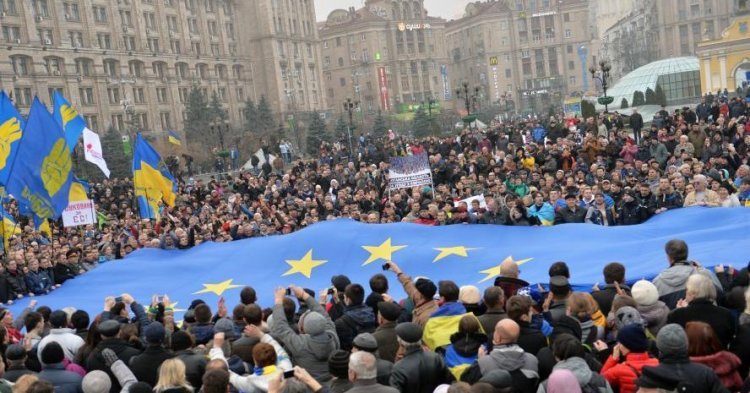This uncertain transition is marked by three major challenges. First, to avoid the rebellion of Russian groups to escalate into open armed conflict. Diverse groups have taken effective territorial control of the most important cities in Eastern Ukraine and demand referendums to integrate to Russia or to federalize the country. This puts the government in a delicate crossroad. On the one hand, it has neither the capacity nor the legitimacy to intervene against these movements. This is an interim government without the authority of having been ratified by an election, and it acts through a recently restructured police force. As if that were not enough, it is likely that these groups are orchestrated by Russia, which continues to intervene in all fronts and through any way it can. The attempted repression of these groups weakens the chances of a compromised process of decentralization in the midterm, which could accommodate minorities, and endangers the democratic credentials of the new government. Civil wars are often the result of failed revolutions; the use of the military and the war-like discourse that is arising put the transition in real danger of collapse.
Second, to introduce political reforms to consolidate a democratic regime. In this sense, there are reasons for optimism. In the current presidential election campaign there is true competition, and diversity of groups within the pro-Western side is a sign that alternatives are possible. The party that supported the run away president is also present in most regions, which is a sign of political freedom. Meanwhile, the interim government of Yatsenyuk has made some steps in the right direction. The most important ones, to have disarmed the far-right militias that got strong during the most violent phase of the protests and to have established relations with the EU.
Third, to give continuity to the political grassroots movement that staged the protests in Kiev. After the dismantling of camps in the center of the city and the end of the demonstrations, few of the leaderships created during this period have been included in the political elite. Both the interim president and the main candidate in the upcoming elections are figures that precede the revolution. This is added to the fact that many have withdrawn their support for Yulia Tymoshenko, who had been the ideological oppositional leader. Most are skeptical about the possibility of returning power to the same names that in the past had been associated with corruption and antagonism. The lack of political renewal has been a demoralizing element for many who wanted to see regime change as an opportunity to modernize the political class.
These challenges will shape the events from now on, and we will have to wait to draw conclusions. Instead, we can learn from what has happened so far. The most important lessons are those that speak about how we understand ourselves as Europeans. In a few months we have seen the Union flag identified with democratic aspirations and a great military power threaten our neighbors. Both events are perfect examples of what European integration should be used for. First, to help each other to keep the pulse of democracy, and second, to be able to have a respectable voice in the world. Observing what happens in Ukraine as if it were not a European problem is not to learn lessons that can be useful to us in the future.

Follow the comments: |
|
